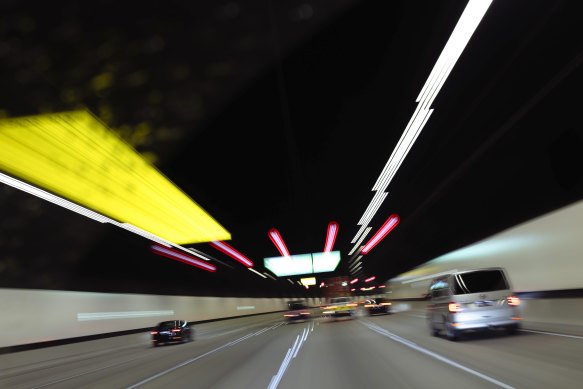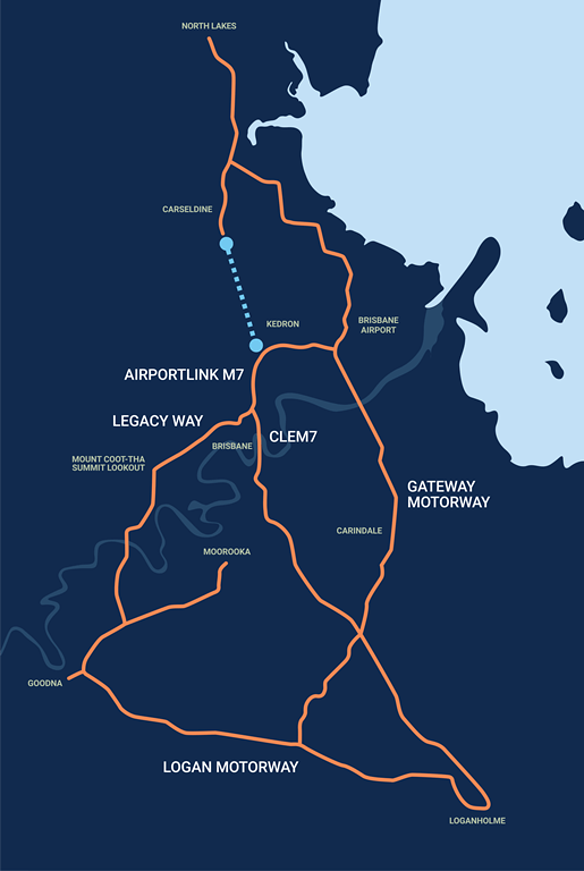- Exclusive
- National
- Queensland
- Traffic
This was published 7 months ago
Who will benefit most from the $10b north Brisbane tunnel plan?
By Sean Parnell
New residents in the housing developments north of Brisbane are being blamed for suburban traffic snarls and now stand to benefit the most from a planned $10 billion tunnel – if they pay the tolls.
But documents obtained by Brisbane Times show the people who live and work closest to the project face further delays, as the 9.1-kilometre tunnel would draw in traffic from across the north-side and add to local congestion.
And even though the tunnel is designed to complement a Gateway Motorway upgrade, and planned western alternative to the Bruce Highway, there would still be gridlock at a notorious pinch point south of the Sunshine Coast.

The Crisafulli LNP government has inherited plans for a $10 billion road tunnel in Brisbane’s north.Credit: Dominic Lorrimer
The Gympie Road Bypass Tunnel was put on the agenda by the Queensland Investment Corporation, which created a dedicated subsidiary, North Brisbane Infrastructure, under the former Labor government.
Taxpayers have so far contributed $350 million to preliminary work on the project without seeing much detail.
Then-transport minister Bart Mellish said the public was “overwhelmingly positive” about the project, yet focus groups were more familiar with a Brisbane City Council proposal the government rejected.
North-side residents involved in the consultations ultimately agreed congestion was an issue, fuelled by population growth in the boom suburbs on Brisbane’s northern fringe and higher density developments around Chermside.
While NBI told the government the residents ended up largely supportive of the project, the full report of the consultation shows they also wanted better public transport – for example, council’s related proposal for an underground rail line – and questioned spending so much money on another toll road.
Traffic modelling completed in March and released under the Right to Information Act this week shows the tunnel would, as expected, ease congestion on Gympie Road by funnelling long-distance travel underground.
By 2031, the tunnel – with portals at Stafford and Carseldine – would reduce traffic volumes on Gympie Road by 8 per cent, and also draw in traffic from the Gateway Motorway.
According to the modelling, motorists starting their trip north of the Pine River would be the biggest beneficiaries. By 2046, they could expect to save up to 18 minutes on a journey to the inner-north and city by taking the tunnel.
“Due to increased congestion at the southern portal in the AM peak, some nearby origins experience a small disbenefit with travel time to the CBD,” the modelling found.
Residents involved in the focus groups had raised such concerns, and also questioned whether the tunnel would increase congestion in the area where the Gympie Arterial and Bruce Highway converge.
The modelling assumed other upgrades would be completed before the tunnel opened – and still identified bottlenecks along the north-south corridor.
“As expected, areas around both the northern and southern portals of the bypass will be more congested due to the tunnel demand. This increased demand is likely to reduce speeds at either end by up to 20 per cent in the northern and southern portals,” the modelling found.

A government map showing Brisbane’s major toll roads and tunnels and the proposed Gympie Road Bypass tunnel (in light blue).
“Further north, the Reference Design Case results in slower speeds on the Bruce Highway between Narangba to [sic] the Pine River of up to 10 per cent in the AM peak period by 2046. A similar pattern is observed in the PM peak in the northbound direction for return journey.”
While the Liberal National Party has expressed support for the project at both a state and council level, the Crisafulli government may be left to decide whether to proceed – and at what cost.
A document prepared by NBI for Cabinet consideration in April warned “without action, almost all major roads through north Brisbane are forecast to exceed capacity in peak periods by 2046”.
“Significant congestion will occur at key connection points along Gympie Road, along the Gateway Motorway, Sandgate Road and Nudgee Road, with traffic loads exceeding 125 per cent of capacity,” NBI told the Labor government.
The former government paused work on the Northern Transitway bus project earlier this year to consider public and active transport improvements above ground if the tunnel were to proceed. It did not entertain the option of a rail connection.
NBI put the cost of the road tunnel at $9.94 billion – for an economic benefit of $1.6 billion – including risk allowances and outturn escalations. It noted the costs “do not include future government policy change such as any potential amendments to Best Practice Industry Conditions”.
Some of the findings, conclusions and recommendations were redacted.
Start the day with a summary of the day’s most important and interesting stories, analysis and insights. Sign up for our Morning Edition newsletter.